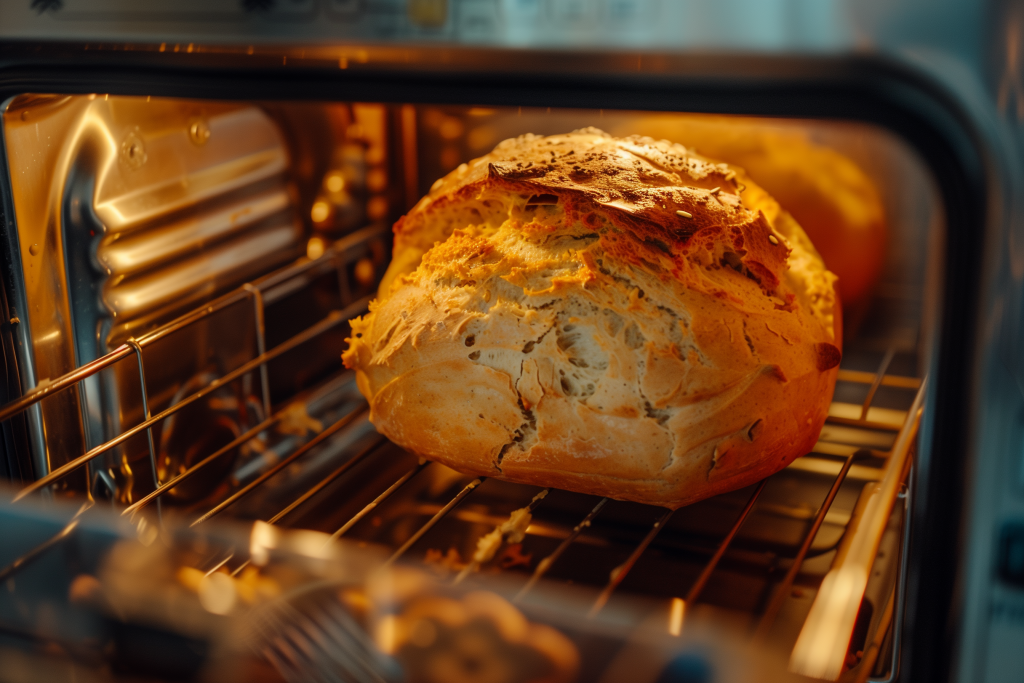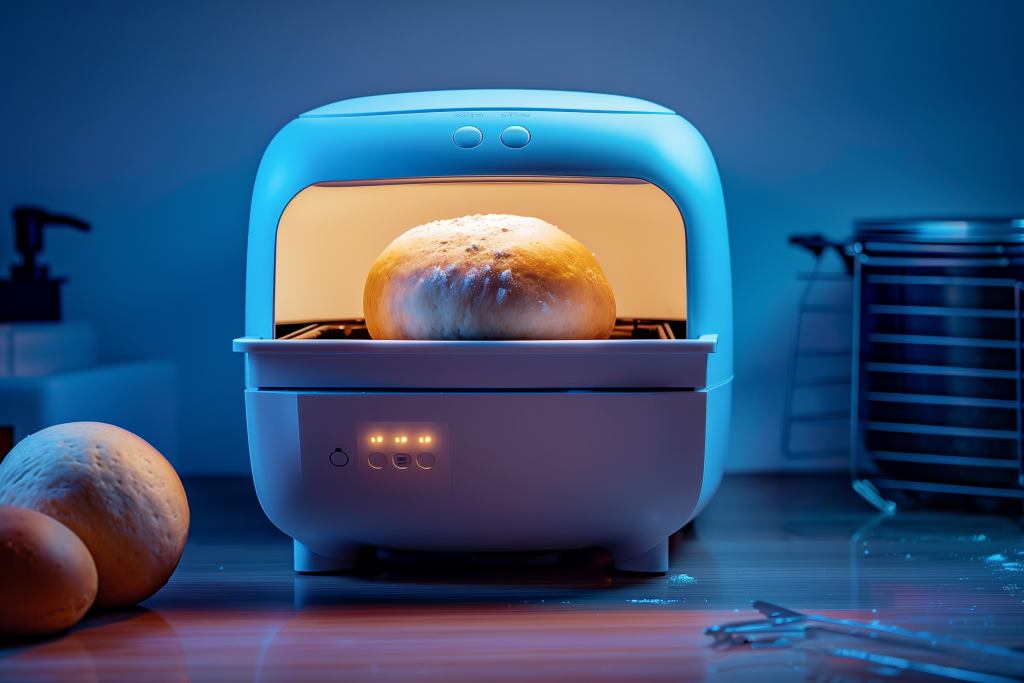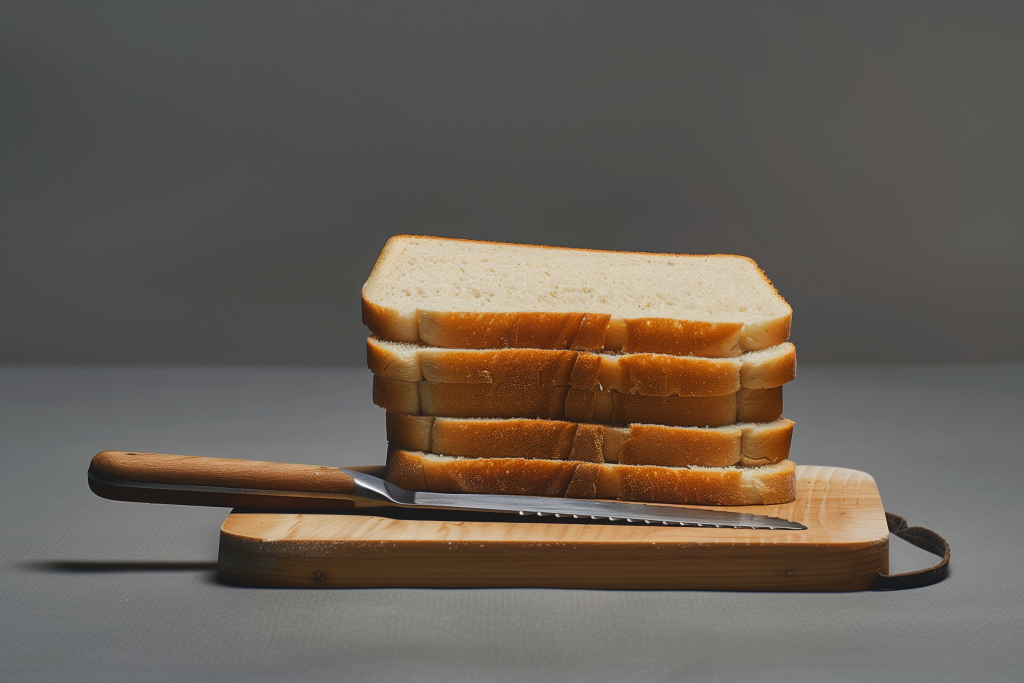Owning a bread machine allows you to enjoy fresh, homemade bread with almost zero effort. However, it’s a major let-down when you open the lid, only to find that the top of your bread has collapsed.
Why Does The Top Of My Bread Collapse In Bread Machine?
The most common reasons bread collapses in the bread machine are using incorrect ingredient measurements, like adding too much yeast, or adding too much or too little salt. Then, wrong flour varieties, adding too hot or cold liquids to your yeast, and overproofing the dough can also result in a sunken loaf.
Various factors can cause bread to collapse in a bread machine. Let’s explore the most common reasons bread collapses in a bread machine and how to fix them.
Not Measuring the Ingredients
Flour, yeast, salt, and water– a traditional loaf of bread needs only four ingredients. However, precision is a critical aspect of baking perfectly risen bread.
Unfortunately, poorly measuring your wet and dry ingredients when mixing dough is responsible for countless bread-baking failures. Too wet or dry dough can cause the bread to collapse in the bread machine. The same applies to making unexpected changes to a bread recipe or adding uncalled-for ingredients.

I am not an avid baker; I prefer cooking where eyeballing the measurements does little harm. However, I quickly learned that a kitchen scale makes an immediate difference in my baking. Put your measuring cups and spoons back in the drawer and invest in a precise weight like the Escali Primo digital food scale.
Putting Too Much Water In The Dough
Adding too much water to the dough mixture is a common cause for bread to collapse in a bread maker. Although the well-hydrated dough is essential to ensure a strong gluten bond, baking excessively moist dough in the bread machine will cause the breadcrumbs to shrink and collapse during cooling.
Carefully measure your liquid ingredients. If the dough appears too wet, gradually add one teaspoon of flour until the dough’s consistency improves.
Using The Wrong Yeast
Stale yeast can compromise the quality of your loaf. You want to ensure the yeast is not expired or has been exposed to heat, moisture, and light.
There are several types of baker’s yeast used to make bread products, including
- active dry
- fresh
- liquid
- instant
Not all yeast types are created equal. Each variety has a set of unique characteristics suited for a particular application. Some yeast varieties can be used interchangeably by tweaking your recipe. However, others cannot be used for all purposes. It’s best to use the recipe’s recommended version for high-quality results.
If you’re in a pinch, you can substitute active dry yeast with instant yeast by multiplying the amount by 1.25. For example, 1 teaspoon of instant yeast equals 1¼ teaspoon of active dry yeast. To replace instant yeast with active dry yeast, multiply the recipe amount by 0.75. For example, 1 teaspoon of active dry yeast equals ¾ teaspoon of instant yeast.

Using too much or too little yeast can cause your bread to collapse. Too little yeast and your bread won’t rise properly; too much yeast will rise too much and collapse.
Mixing Yeast With Too Hot Or Cold Liquid
Another reason your bread may collapse is by activating or mixing the yeast with too hot or cold liquid.
Yeast is very particular and proves best at 100 to 110 degrees Fahrenheit. Temperatures above 140 degrees Fahrenheit will kill the yeast, and temperatures below 70 degrees Fahrenheit won’t be warm enough to activate the yeast.
If I haven’t baked in a while, I like to proof my yeast to ensure it’s still active. To do this, combine 2¼ teaspoons of yeast, 1 teaspoon of sugar, and about ¼ cup of lukewarm water. After ten minutes, bubbles and a yeasty aroma should develop. If not, discard the yeast. If you want to ensure the best quality of your bread, choose the best bread maker for your dough or sourdough.
Using The Wrong Flour
Using a different flour type than what the recipe calls for can cause your bread to collapse in the bread maker. You can compare the bread machine flour from a regular flour then choose what you think is best. Each flour variety has a different protein and gluten content; using flour with a lower protein content will result in a weaker gluten mesh.
Ensure you use a high-quality brand with decent starch and protein for a well-risen bread. After making your bread, if you have no other option to store bread you can use the bread machine instead, here’s why.
Proofing The Dough Too Much
When I first got my bread machine, I never thought proofing time would affect my loaf. Instead, I naively expected a perfect loaf of bread by simply pushing a button. However, over-proofed dough is a common cause for the top of your bread to collapse in the bread machine.
Perfecting your proofing time is vital to prevent your bread from collapsing. During this stage, the yeast feeds on the sugars, creating carbon dioxide – the gas that helps produce the “perfect rise.”

Overproofed dough occurs when the dough is left to rise or proof for too long. This can happen when you leave the dough in the bread machine for too long after its cycle unlike leaving the bread overnight on your bread machine, that is another story. Environmental changes like scorching temperatures and high humidity can also accelerate the proofing rate.
Too Much or Not Enough Salt
Salt is a significant component in baking bread. It affects the overall flavor and structure of the bread.
Salt tightens the gluten structures, enabling the dough to retain carbon dioxide efficiently. If the gluten strands are weak, the dough will be slack, potentially causing the top of your bread to collapse.
Salt also controls yeast fermentation by acting as a yeast inhibitor, slowing down the growth and reproduction of yeast in the dough. Using less or no salt in your dough may rise too quickly during the proofing stage, increasing the likelihood of the bread collapsing.
Related Questions
How Do I Keep My Bread From Collapsing In The Bread Machine?
Ensure you use the correct ingredient ratios and the flour and yeast types in your recipe to prevent the top of your bread from collapsing in the bread machine. You can always gradually add a teaspoon of flour to your dough if it’s too moist.
What Happens If I Use Too Much Yeast?
Although extra amounts of yeast will cause your bread dough to rise faster, it will produce carbon dioxide gasses prematurely, causing a flat, hollow loaf.
Conclusion
Fixing collapsing bread in the bread machine can take several trial-and-error rounds. Be patient and tweak the recipe until you transform your collapsed loaves into perfectly baked “set-it-and-forget-it” fresh loaves.
Nathaniel Lee is an avid cook, drawing on his decades of home cooking and fine dining experience. He is a contributing chef at Mashed, and his recipes and contributions have been featured in Tasting Table, Edible Arrangements, Insanely Good Recipes, and The Daily Meal.
